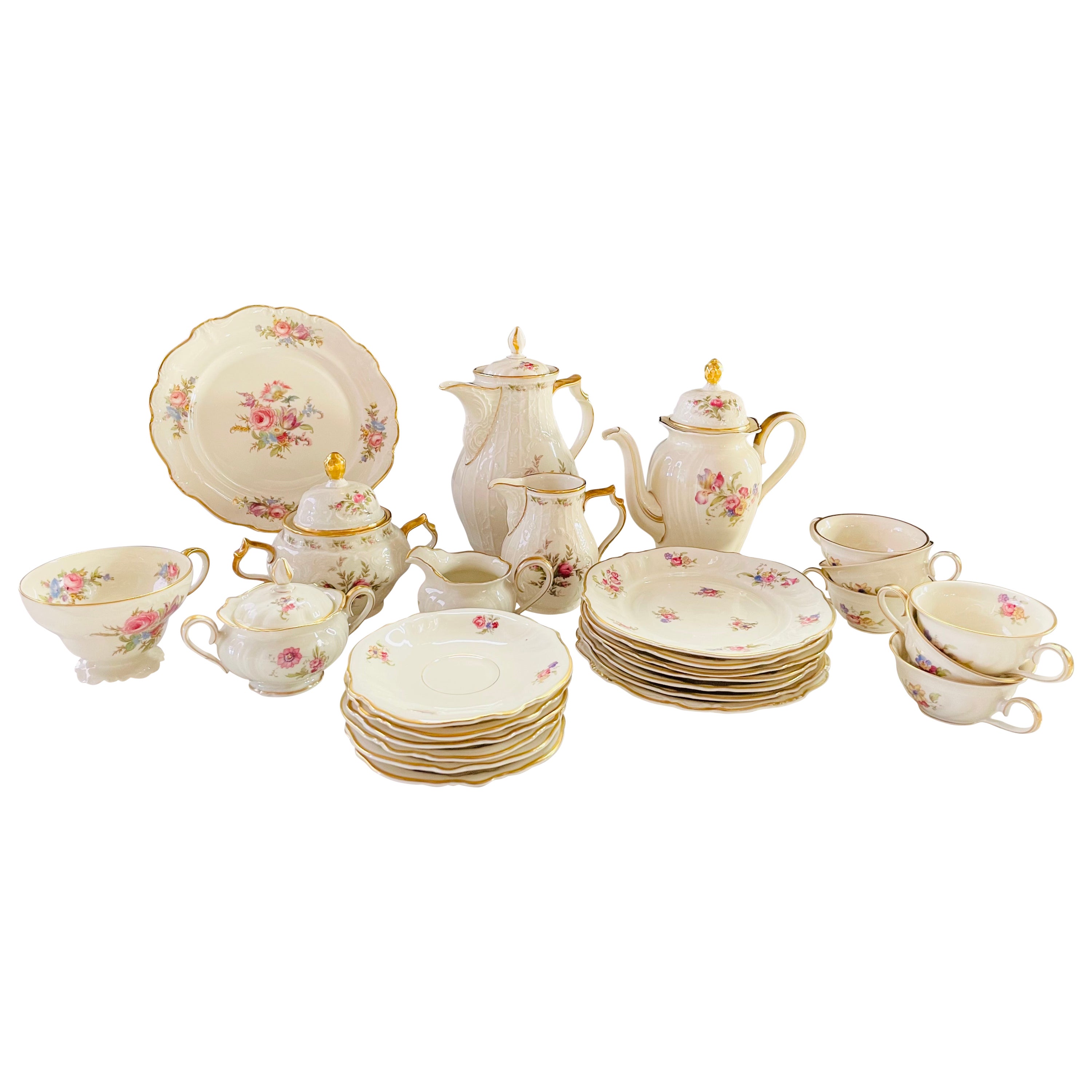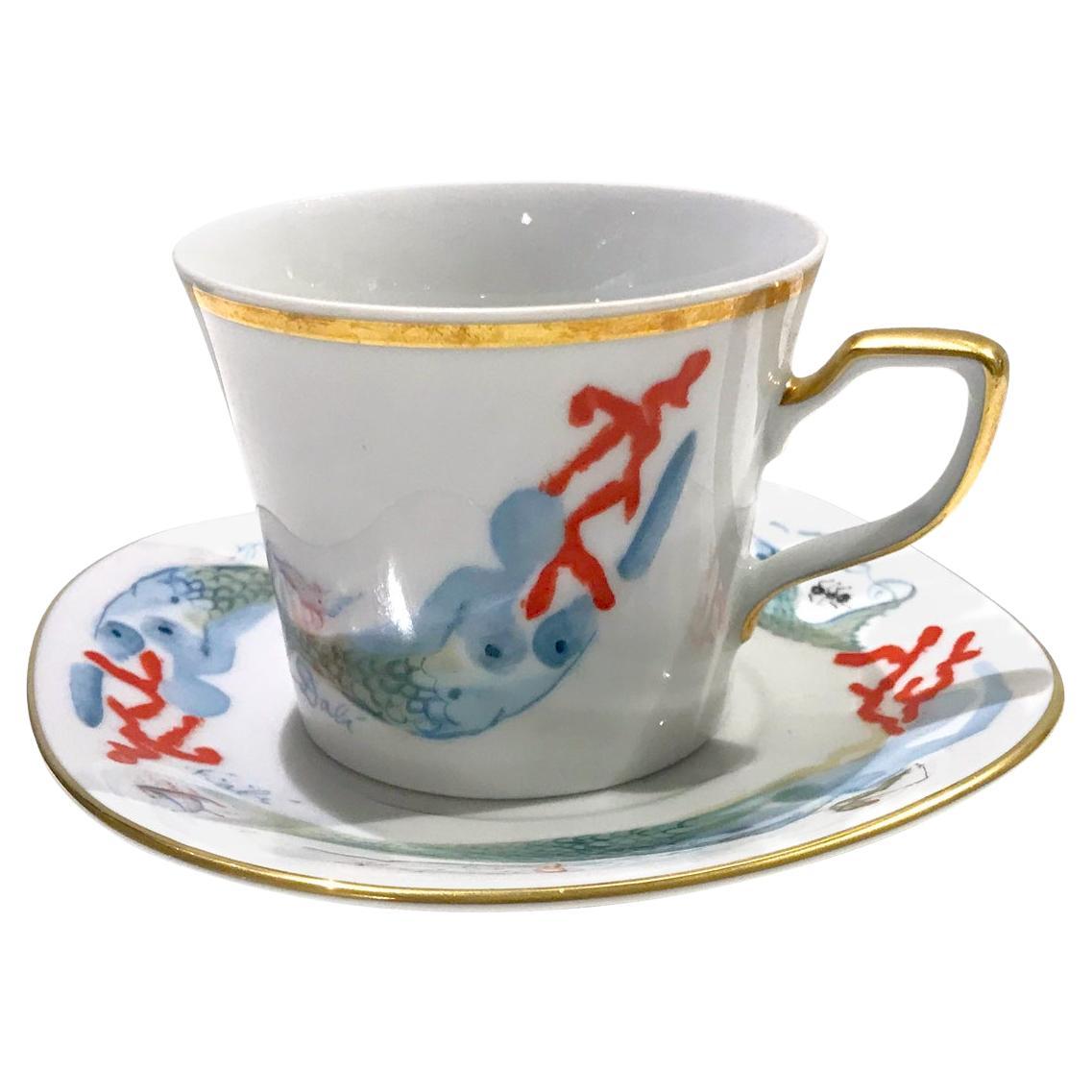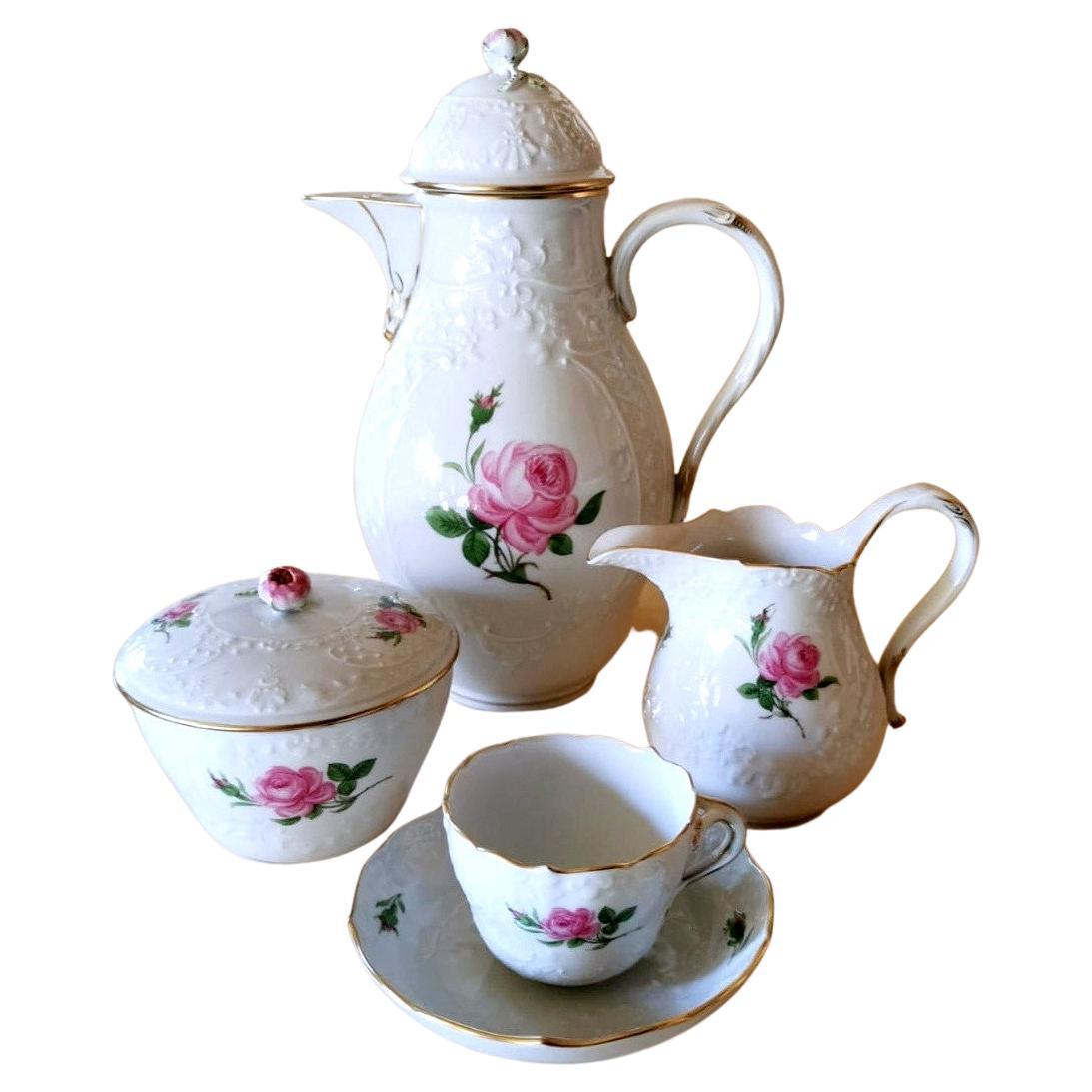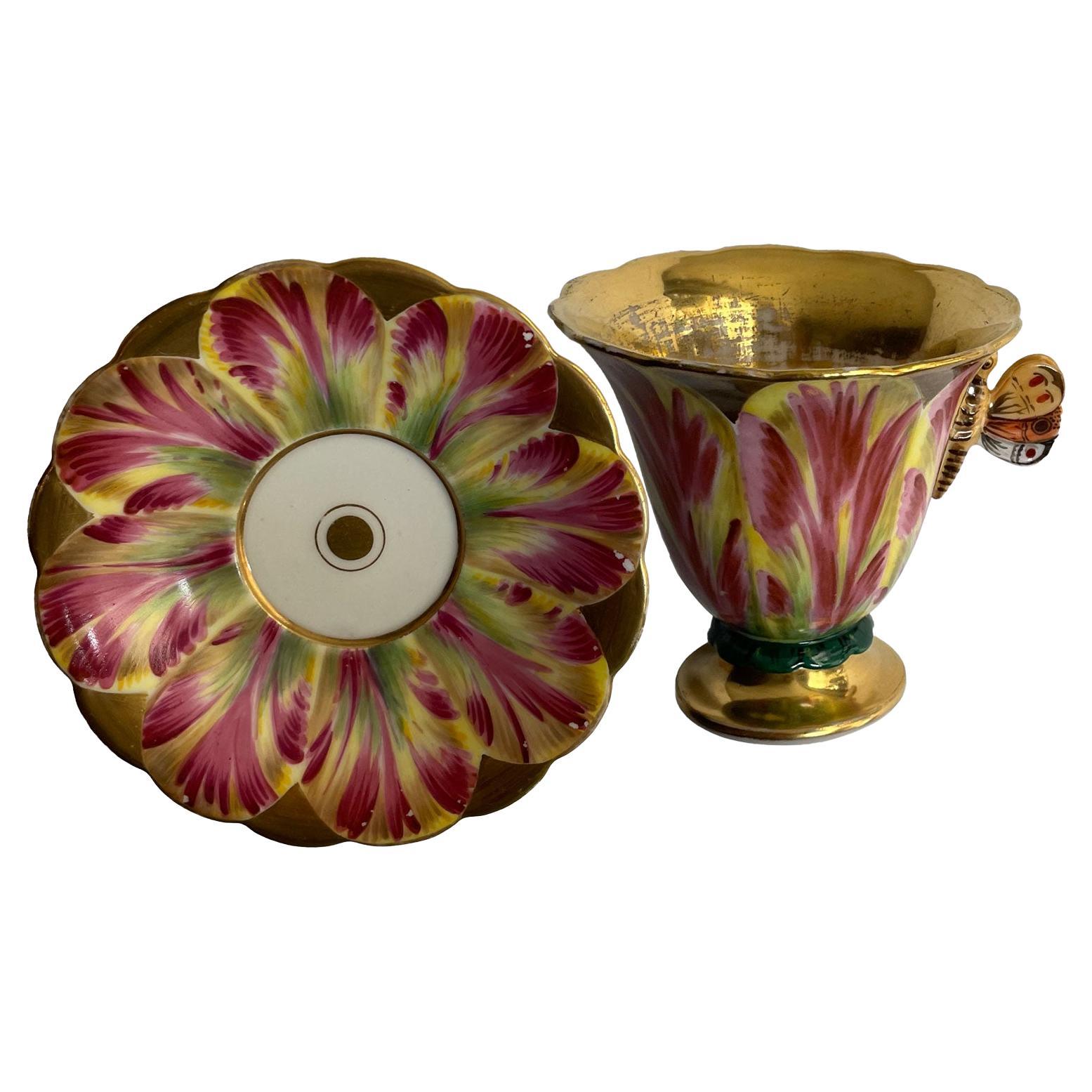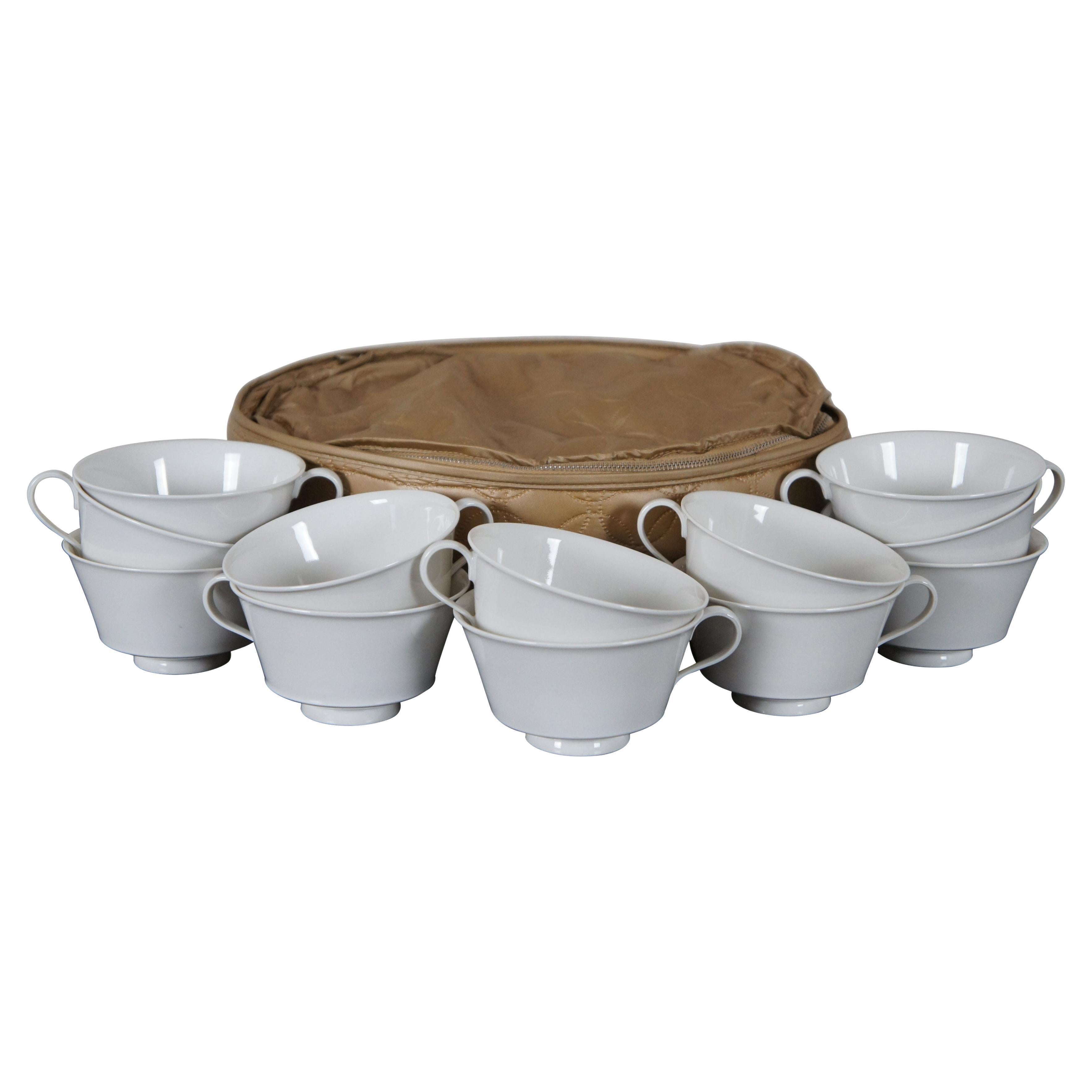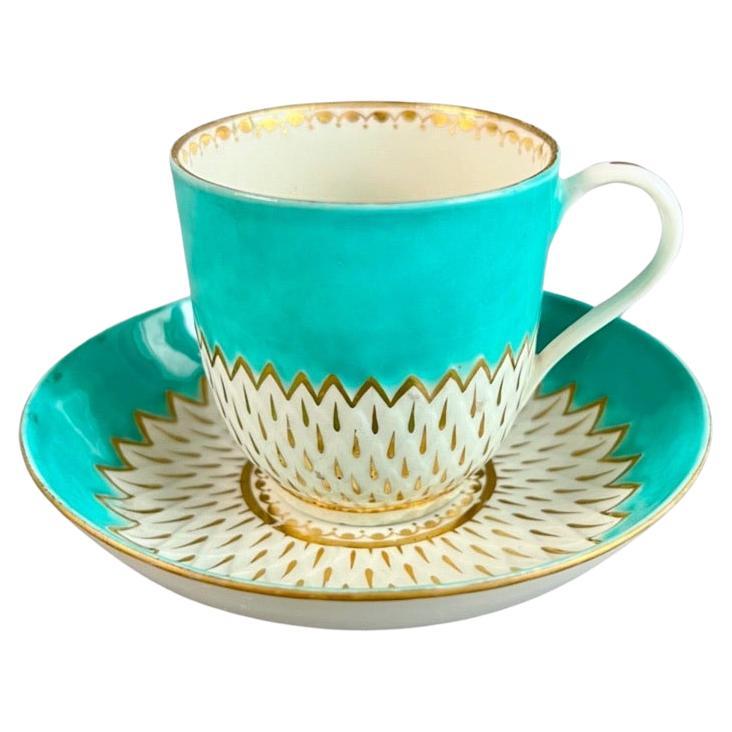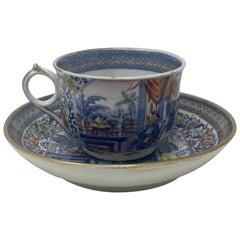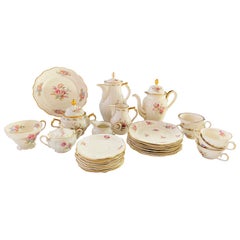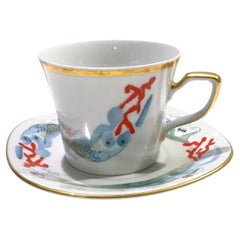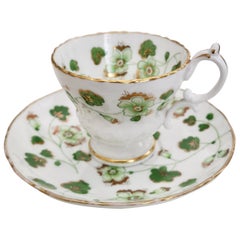
Ridgway Porcelain Coffee Cup, Green Floral Design, Victorian, circa 1840
View Similar Items
Want more images or videos?
Request additional images or videos from the seller
1 of 14
Ridgway Porcelain Coffee Cup, Green Floral Design, Victorian, circa 1840
About the Item
- Creator:Ridgway Porcelain (Maker)
- Dimensions:Height: 1 in (2.54 cm)Width: 1 in (2.54 cm)Length: 1 in (2.54 cm)
- Sold As:Set of 2
- Style:Early Victorian (Of the Period)
- Materials and Techniques:
- Place of Origin:
- Period:
- Date of Manufacture:circa 1840
- Condition:Wear consistent with age and use. In excellent condition without damage, repairs, crazing or wear.
- Seller Location:London, GB
- Reference Number:Seller: A-RID801stDibs: LU4805120085222
About the Seller
5.0
Gold Seller
These expertly vetted sellers are highly rated and consistently exceed customer expectations.
Established in 2016
1stDibs seller since 2019
208 sales on 1stDibs
Typical response time: 1 hour
More From This SellerView All
- Ridgway Porcelain Teacup and Saucer, Blue Flowers and Gilt, Regency, Ca 1825By Ridgway PorcelainLocated in London, GBThis is a beautiful teacup and saucer made around 1825 by Ridgway. It is decorated with the very popular pattern no. 2/1000: a cobalt blue ground with rich gilding and monochrome blu...Category
Antique 1820s English Regency Tea Sets
MaterialsPorcelain
$340 Sale Price / set20% OffFree Shipping - Bow Porcelain Orphaned Coffee Cup, Famille Rose Peony, circa 1755By Bow PorcelainLocated in London, GBThis is a very charming orphaned coffee cup made by the Bow Porcelain factory in about 1755. The cup is decorated in a Chinese "famille rose" peony pattern. This cup would have been part of a large tea service, and the tiny size shows how expensive coffee was in the 18th Century. The Bow Porcelain Factory was one of the first potteries in Britain to make soft paste porcelain, and most probably the very first to use bone ash, which later got perfected by Josiah Spode to what is now the universally used "bone china". Bow was the main competitor of the Chelsea Porcelain Factory, but where Chelsea made very fine slipcast porcelain, Bow made a different soft paste porcelain that tended to be softer and could be pressed into moulds. Bow served a larger public generally at lower prices. The factory was only in operation between 1743 and 1774, after which the tradition got incorporated into some of the later famous potteries such as Worcester and Derby. The cup is unmarked, which is normal for Bow items of this era. Condition report the cup is in excellent condition without any damage or repairs. There are various glazing imperfections, which are quite normal for porcelain of this era. Antique British porcelain...Category
Antique 1750s English Rococo Tea Sets
MaterialsPorcelain
- C.J.Mason Porcelain Coffee Cup, Chinoiserie Birds Red and Gilt, ca 1830By C.J. Mason 1Located in London, GBThis is a beautiful coffee cup and saucer made by C J Mason around 1830, which was the George IV era. The items are decorated with beautiful transfer printed birds and Chinoiserie de...Category
Antique 1830s English George IV Porcelain
MaterialsPorcelain
$204 Sale Price / set20% OffFree Shipping - Derby Porcelain Coffee Cup, Artichoke Pattern in Turquoise, Georgian ca 1785By DerbyLocated in London, GBThis is a beautiful coffee cup and saucer made by Derby in about 1785. The set has the distinctive "artichoke" moulding and a bright turquoise ground with the white artichoke surface...Category
Antique 1780s English George III Tea Sets
MaterialsPorcelain
- Riley Coffee Cup, Gilt Chevron Zigzag Pattern, Regency, circa 1815By J&R RileyLocated in London, GBThis is a beautiful coffee cup and saucer made by Riley in about 1815, decorated in a striking gilt chevron pattern with a rather psychedelic zigzag effect. The John & Richard Ril...Category
Antique 1810s English Regency Porcelain
MaterialsPorcelain
$256 Sale Price / set20% OffFree Shipping - Samuel Alcock Porcelain Coffee Cup, Orange Imari Flowers, Rococo Revival ca 1830By Samuel Alcock & Co.Located in London, GBThis is a beautiful coffee cup and saucer made by Samuel Alcock around 1830, which was the Rococo Revival era. The set is decorated with a bold Imari pattern and has a "ring-moulded" shape. Samuel Alcock was one of the many potters in Staffordshire such as Spode, Coalport, H&R Daniel and many others during the 1830s and 1840s. He was perhaps not the most well-known of potters but produced very high quality wares and original designs, often standing out for their bright choice of colours and beautiful shapes. The Alcock factory is not well documented so although they had a huge output, items are often mis-identified and we don't know much about the production process of artists, even though the wares have a very high quality that equals that of the more well known factories. The Rococo style was originally a style of the 18th Century. After the Baroque style, which was highly symmetrical and well-designed as it aimed to express the perfection of God, the Rococo style was a reaction that expressed the unpredictability and flow of nature. "Rococo" is derived from the French word "rocaille", which stands for a mass of pebbles that are self-organised in a completely unpredictable mess, for instance on the beach or in the mountains. Rococo moved away from the stranglehold that religion had on the arts: it was capricious, asymmetrical, charming and worldly. As Europe got mired in various wars between Germany, France and Britain, the general style got much more austere again and people embraced neo-classicism. But in the 1830s and 1840s, the seemingly unlimited fortunes of the Industrial Revolution sparked a revival of Rococo, once again creating natural shapes that are not always symmetrical and don't particularly make rational sense. This coffee cup can...Category
Antique 1830s English Rococo Revival Tea Sets
MaterialsPorcelain
$264 Sale Price / set20% OffFree Shipping
You May Also Like
- Antique Chinese Cup & Saucer, circa 1840Located in New Orleans, LAAntique Chinese cup & saucer, circa 1840.Category
Antique Mid-19th Century Chinese Tea Sets
MaterialsPorcelain
- Rosenthal Kronach Viktoria German Porcelain Floral Design Coffee Set, 27 PiecesBy RosenthalLocated in Plainview, NY1930's Rosenthal Kronach Viktoria Lombul gold trim German porcelain large coffee set of 27 pieces decorated in a floral prink rose motif on white. Ea...Category
20th Century German Victorian Tea Sets
MaterialsPorcelain
- Porcelain Coffee Cup and Saucer "Sirenas" Designed by Dalí, N°520/1000By Salvador DalíLocated in Paris, FRWonderful Porcelain Coffee cup and saucer "Sirenas peinadas con coral and hormiga" by Salvador Dalí. The famous surrealist artist created this model in 1977 with mermaids, red vivid corals and small ants on a white background. Each piece has a gold rim on the edges giving a very luxurious aspect. Limited edition made of German porcelain produced by the Manufactory Schirnding...Category
Late 20th Century German Porcelain
MaterialsPorcelain
$333 Sale Price / item20% Off - Meissen Porcelain Pink Roses Coffee Service and Embossed Decorations '11 Cups'By Meissen PorcelainLocated in Prato, TuscanyWe kindly suggest you read the whole description, because with it we try to give you detailed technical and historical information to guarantee the authenticity of our objects. Rare Meissen porcelain coffee service in Biedermeier style; the set consists of a teapot, a sugar bowl, a milk jug, and 11 cups with plate; the various pieces are made of fine hand-painted hard white porcelain with the "Pink Roses" decoration enriched on all items with sumptuous unpainted relief decorations. Unlike the simple and quite common "Pink Roses", this model is very rare, prestigious, and sought after, therefore even more expensive; in fact, the objects with this relief decoration, much more particular and detailed than others, were fired three times, while those with only the "Pink Roses" decoration only twice. Moreover, the execution of this ornamental motif with delicate and graceful flowers was entrusted only to the most experienced and skilled painters, those in possession of the prestigious diploma obtained at the "School of Drawing of Meissen" established since 1764. The knobs of the teapot and sugar bowl represent two harmonious and graceful rosebuds, also handmade; the edges of the cups and saucers are scalloped and finished with pure gold as well as the other decorations of the teapot and sugar bowl. All pieces bear the original Meissen trademark (two crossed swords) and from the enclosed list it can be stated with certainty that our service was produced between 1934 and 1944; moreover, on the objects the model is handwritten (61/106), this wording makes the artifacts even more precious and appreciated as they preserve all the characteristics of the author's calligraphy. Meissen porcelain was created in the castle of Albrechtsburg, in Meissen, a small town in Saxony near Dresden, in 1710, at the behest of Augustus the Strong (1670-1733), Prince-Elector of Saxony and King of Poland, who wanted to start production after the studies and experiments of his alchemist Bottger. Bottger discovered the formula for porcelain, in fact at that time, only the Chinese and Japanese had the recipe to create this wonderful material; Meissen was, therefore, the first porcelain produced in Europe! Bottger never revealed his formula to anyone, only a certain stage was known to the workers; we do not know, even today, in what proportions the different components are mixed; this is the great secret that allowed the famous brand to be considered the best in the world, Meissen porcelain is given the nickname of "white gold"! Through the years, Meissen has perfected its hard-paste products with high-temperature firing during its glazing. Meissen's porcelain patterns have been copied by many other manufacturers around the world such as Royal Copenhagen, Dresden, Herend, and many others, but Meissen's porcelain glaze maintains its quality over time and is superior to all (plates will not scratch with prolonged use of cutlery!). This is why even old Meissen...Category
Mid-20th Century German Biedermeier Porcelain
MaterialsPorcelain
$4,831 Sale Price / set20% Off - Hand Painted Gilt Porcelain Tea, Coffee Cup with Desert PlateLocated in North Hollywood, CAFine gilt original porcelain coffee or tea cup with saucer and desert plate. Enjoy the start to your day with the classical sophistication of this fine p...Category
Late 20th Century French Bohemian Porcelain
MaterialsPorcelain
- Tulip Coffee Cup in Gilded Paris Porcelain by Flamen-FleuryBy Old ParisLocated in Paris, FRTulip-shaped cup with its saucer in Old Paris Porcelain. Hand-painted pieces with lovely purple and white shades, in the shape of a tulip flower. Very delicate piece with a butterfly...Category
Antique Early 19th Century French Restauration Porcelain
MaterialsPorcelain


